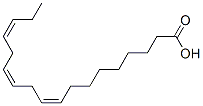How is trans fat formed?
1 Answer
Trans fats are formed from linolenic acid during the partial hydrogenation of liquid oil
Explanation:
Trans fats are formed from linolenic acid during the partial hydrogenation of liquid oils.
Hydrogenation converts vegetable oils to solid fats.
Fats and oils are triglycerides — esters of long-chain fatty acids.
(from gotsomescienceonyou.com)
The fatty acids can contain zero, one , or more double bonds.

(from gotsomescienceonyou.com)
If the fatty acid is saturated (no double bonds), the acid chains can line up side-by-side and maximize their London dispersion forces. So saturated fats tend to be solids.
Most naturally-occurring fatty acids are cis. Examples are oleic acid
(from gotsomescienceonyou.com)
and linolenic acid

(from chemical book.com)
Cis double bonds put a "kink" in the molecules, so they can no longer line up so closely. The London dispersion forces are weaker, so unsaturated fats tend to be oils at room temperature.
Manufacturers hydrogenate vegetable oils just enough to turn them into a semi-solid form (e.g. margarine).
In the process, linolenic acid gets transformed into elaidic acid (the trans isomer of oleic acid).
(from gotsomescienceonyou.com)
The chains of trans fatty acids’ chains are straighter than those of cis fatty acids, so they can line up closely like saturated fatty acids.
The London dispersion forces are greater and the fat becomes more solid.

